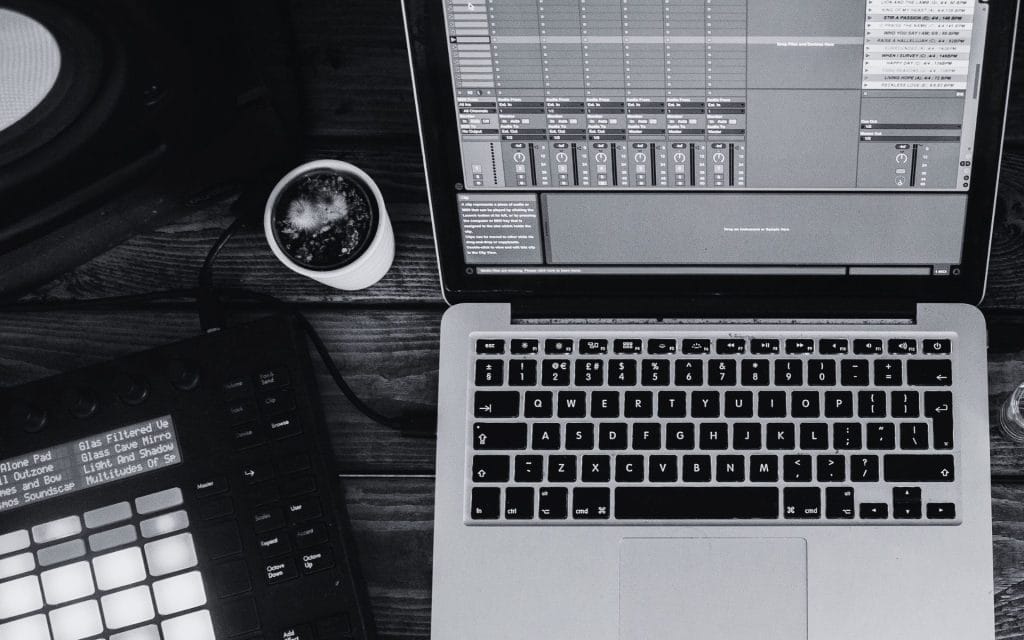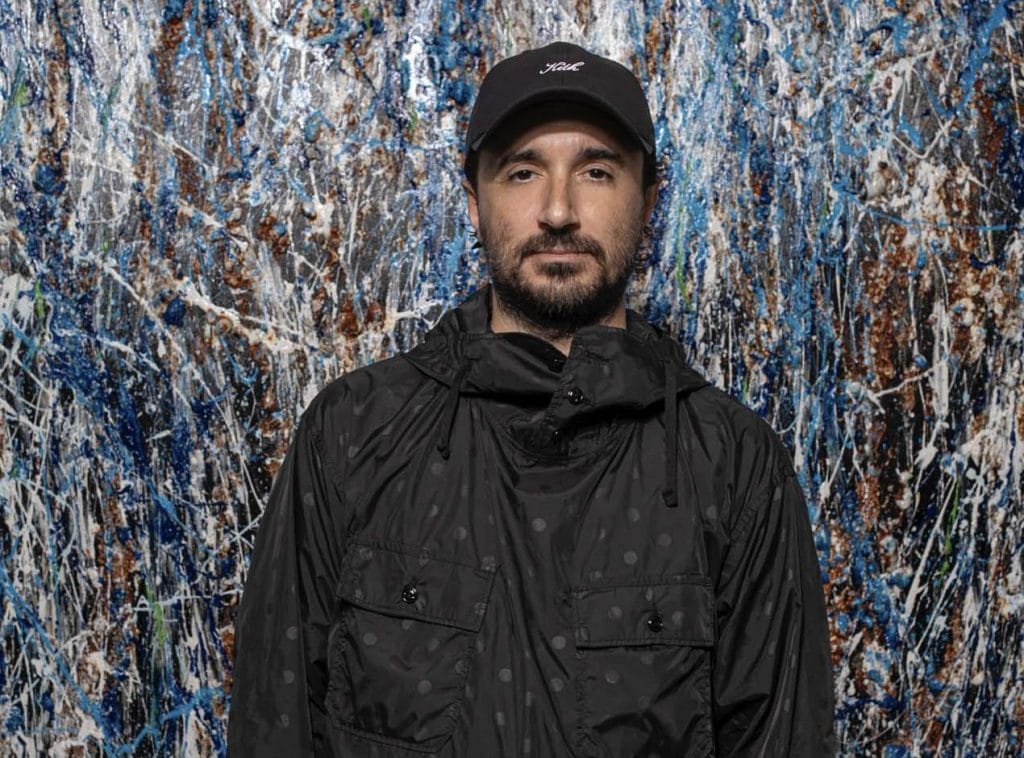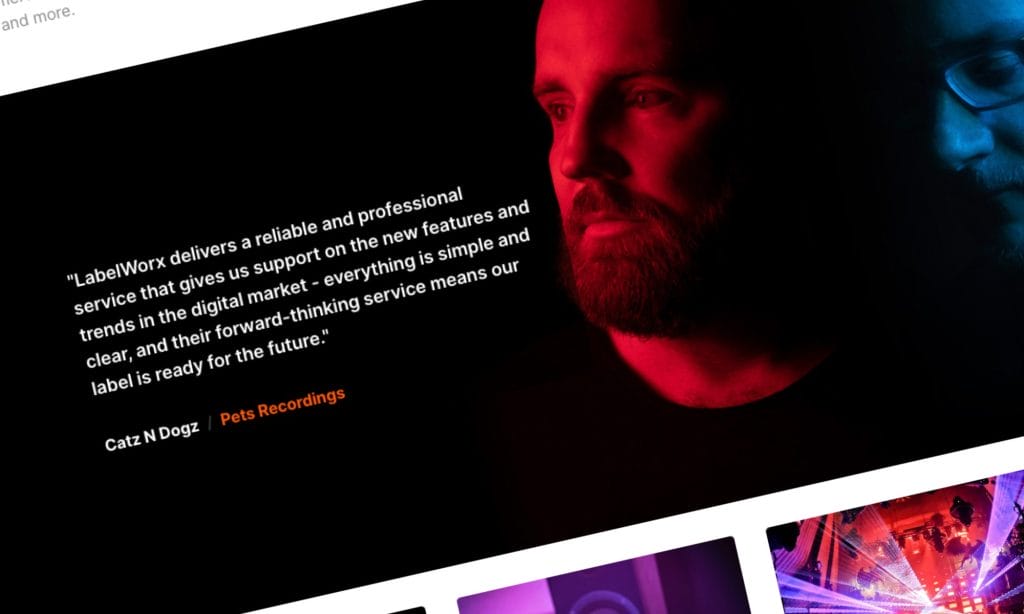Images C/O Labelworx
With streaming algorithms changing faster than ever, and digital distribution more accessible than it’s ever been, the role of labels in electronic music is shifting. Dom Kerley, VP of Artists, Content, and Labels at LabelWorx, has witnessed the rise of thousands of independent artists and imprints. His experience offers a sharp look at what truly drives momentum in a saturated market, and how labels can stay relevant without becoming gatekeepers.
Labelworx helped us launch Magnetic Magazine Recording’s just over a year ago now, and we wanted to check in with their head honchos both to see how we can be running a tighter ship at our own label as well as how artists nd labels in the greater community can make major moves with smaller teams in 2025.
In this conversation, we talk about long-term strategy, shifting expectations, and how LabelWorx’s Accelerator program helps label owners turn ideas into real-world impact by supporting labels with a range of services, including schedule management, structure, and advice for your DSP strategy, facilitating contracts, and producing artist royalty statements.
You’ve had a front-row seat to thousands of independent releases. From your perspective, what are the key habits or decisions that help artists build long-term momentum—and how can label operators help support those behaviors more effectively?
It’s harder than ever for artists to cut through the noise, with thousands of new releases hitting DSPs daily. Streaming algorithms tend to reward consistency, so having a regular release schedule can be crucial—so long as you’re not cannibalising a track that’s already performing well. A steady flow of music helps artists build momentum.
That said, it’s still important to give each record enough time to breathe. A four-week gap between frontline singles is the minimum I’d recommend; six weeks is often ideal to keep the schedule consistent without rushing things. If you’re not locked into a label’s timeline, staying flexible can really help, especially if a track starts to connect.
You can push the next release back, as long as you give stores, distro, and your promo team enough notice to adjust the campaign.
Do you think most artists coming up in 2025 still need a label to succeed—or is the real advantage having a release plan with a clearly defined strategy? How should label owners think about positioning themselves around that shift?
These days, consistent releases benefit artists both on streaming platforms and social media. Algorithms favor those who stay active. But labels still have value if they offer more than just distribution. The right label should feel like a community you want to be part of. Look at their roster and ask, “Are these the peers I want to grow alongside?”
Also, be sure to understand what support a label is actually offering. Are they doing their own promo? Hiring external agencies? How will they pitch your music? A good label brings meaningful resources and connections, not just access to DSPs.
When artists criticize labels for ‘just getting the song on Spotify,’ do you think that reflects a disconnect in expectations—or does it highlight something labels actually need to address in how they communicate or deliver value?
I think it’s both.
With digital distribution now accessible to anyone, simply getting a song onto Spotify isn’t enough anymore. Labels need to deliver tangible value. That doesn’t mean spending huge budgets, but they should be transparent about what they’re doing, whether it’s editorial pitching, social media support, or PR efforts. Artists should know the label is genuinely working to extend the reach of their release.
Are you seeing more artists treat distribution as a long-term strategy instead of a short-term solution? If so, what can labels do to remain useful and competitive in that environment?

Absolutely.
Many artists now see self-distribution as a viable long-term strategy. With lower barriers to entry, it’s become easier to run effective campaigns independently, sometimes better than what a traditional label might offer.
For labels to stay competitive, they need to offer artists real campaign support—something beyond just uploading the music. This includes working their own playlist networks, developing a strong social presence, and helping artists get in front of new audiences. These are things artists might struggle to do alone, and they give the label a clear value proposition.
What should modern labels be tracking as indicators of success in 2025—especially if traditional metrics like playlist adds or follower growth don’t tell the full story anymore?
Pre-release traction on social media is a big one. It can help forecast how a record might perform, but it’s not always reliable. A track might go viral for a meme or trend but still flop on streaming if listeners don’t engage with it outside of that context.
For me, one of the most telling metrics is an artist’s ability to sell tickets. If someone can fill rooms in their home city, or better yet, in multiple nationally and internationally, it means they’ve built a real, engaged fan base. That kind of support often matters more than social follower counts or even monthly listeners.
Many artists equate independence with control—but is that always the most productive framing? What should labels be doing to reframe the value of collaboration without triggering that fear of lost control?

Labels need to offer deals that make sense. In dance music especially, we’re seeing fewer long-term deals that tie artists down, but horror stories still happen—artists stuck in holding patterns, unable to release music and losing momentum.
To counter that fear, labels should lead with transparency and flexibility. If both sides are aligned and working toward the same goals, the relationship tends to be much healthier, and you usually see that reflected in the success of the release.
Let’s say you had to build a label-adjacent release strategy from scratch—using only a distribution platform and a $2,000 budget. What steps would you take to give the release a real shot in today’s market?
Pre-release momentum is key.
I’d start by using part of the budget to generate traction on social media, ideally with TikTok and Meta sounds delivered early by your distributor. The goal is to get people using the sound pre-release, which can influence editorial support. Paid boosts can help, but only if you’re amplifying something that’s already working organically.
For dance music, it’s still vital to get the track into the hands of key DJs before release. Use a club promo service (with a radio embargo) to build hype, but make sure they actually target the right DJs for your genre. Ask for a target list and a plan before committing to ensure your goals are aligned.
Run some targeted social ads from release day. Just remember: these only work as well as the creative you’re using. If your video asset isn’t compelling, the ad won’t perform. Use Spotify for Artists data to inform your geo-targeting.
Radio plugging is an option, but it’s expensive and less impactful than it used to be. I’d only consider it if the release is already showing signs of success.
Finally, keep some budget in reserve. Once the track is out, you’ll get data quickly—use that to identify what’s working and double down, while addressing weaker areas. Staying nimble is a big advantage in today’s market.
Want help managing your label with fewer headaches?
LabelWorx’s Accelerator program is a dedicated label management service for distribution clients, designed to help artists and label operators focus on what they do best. Whether you’re launching your first imprint or scaling an existing catalog, Accelerator can handle everything from metadata and royalty accounting to release schedules and campaign support.
For more information, visit LabelWorx Accelerate.
The post When Getting on Spotify Isn’t Enough—Dom Kerley On What Labels Should Be Doing appeared first on Magnetic Magazine.






